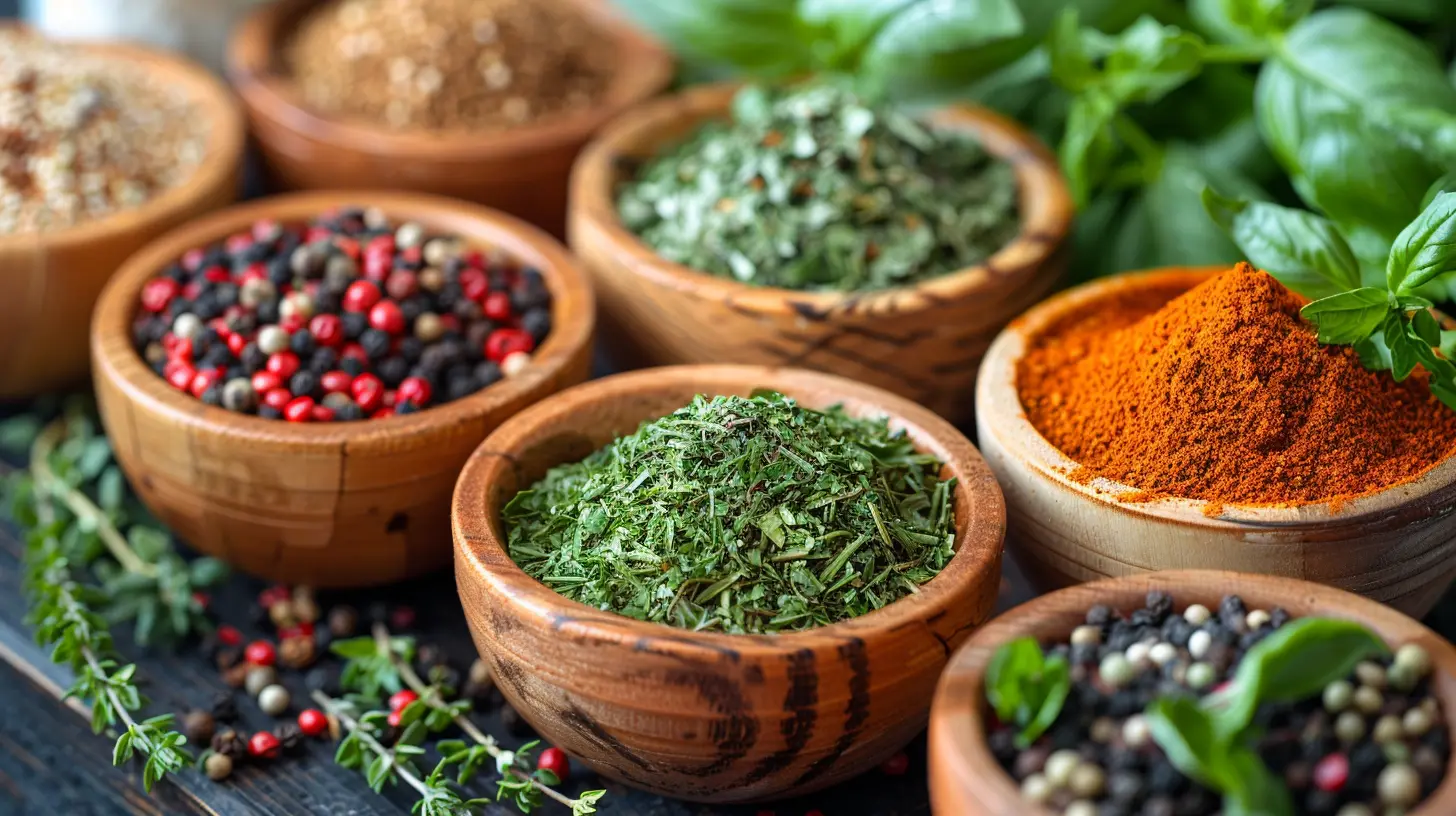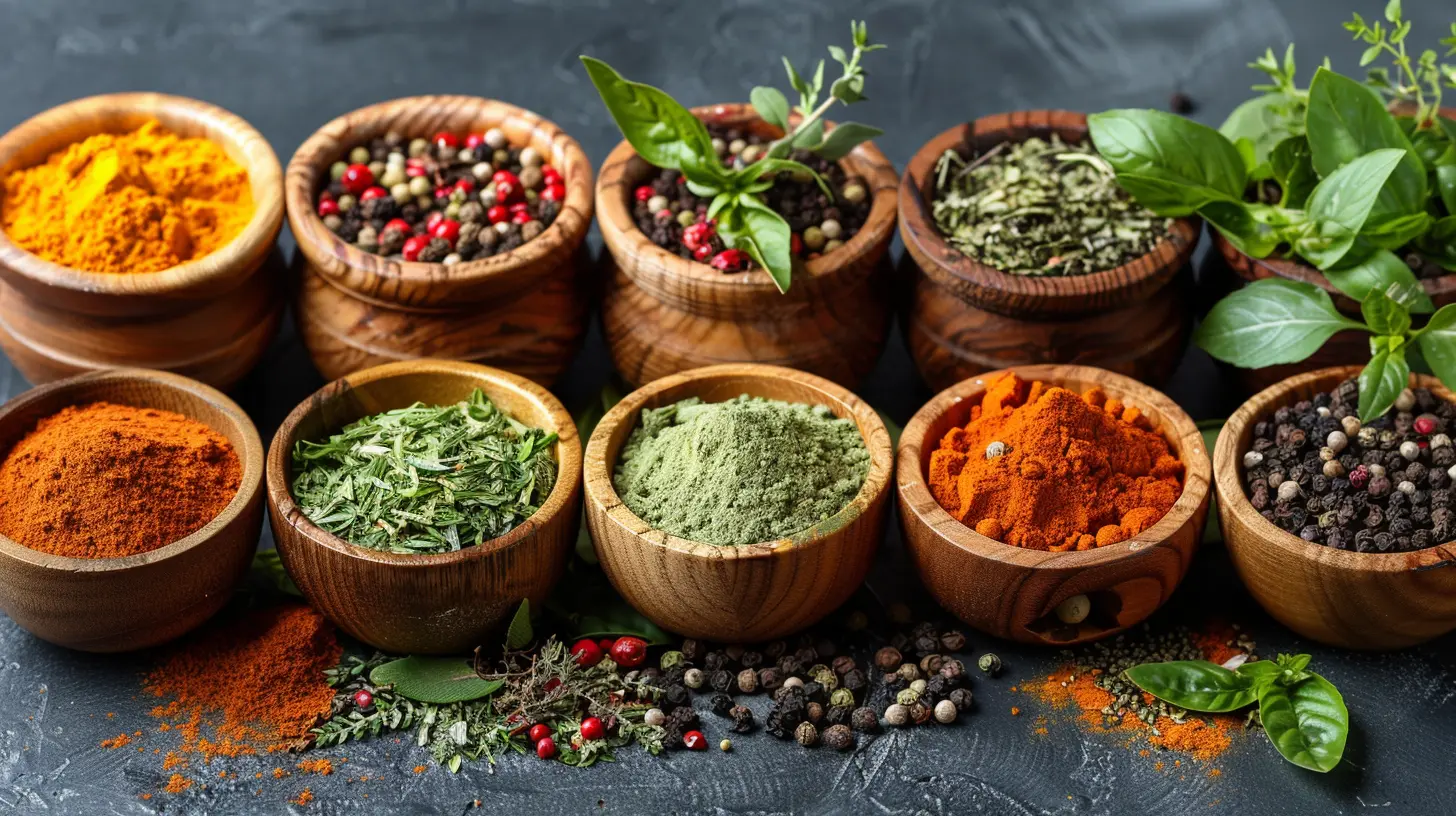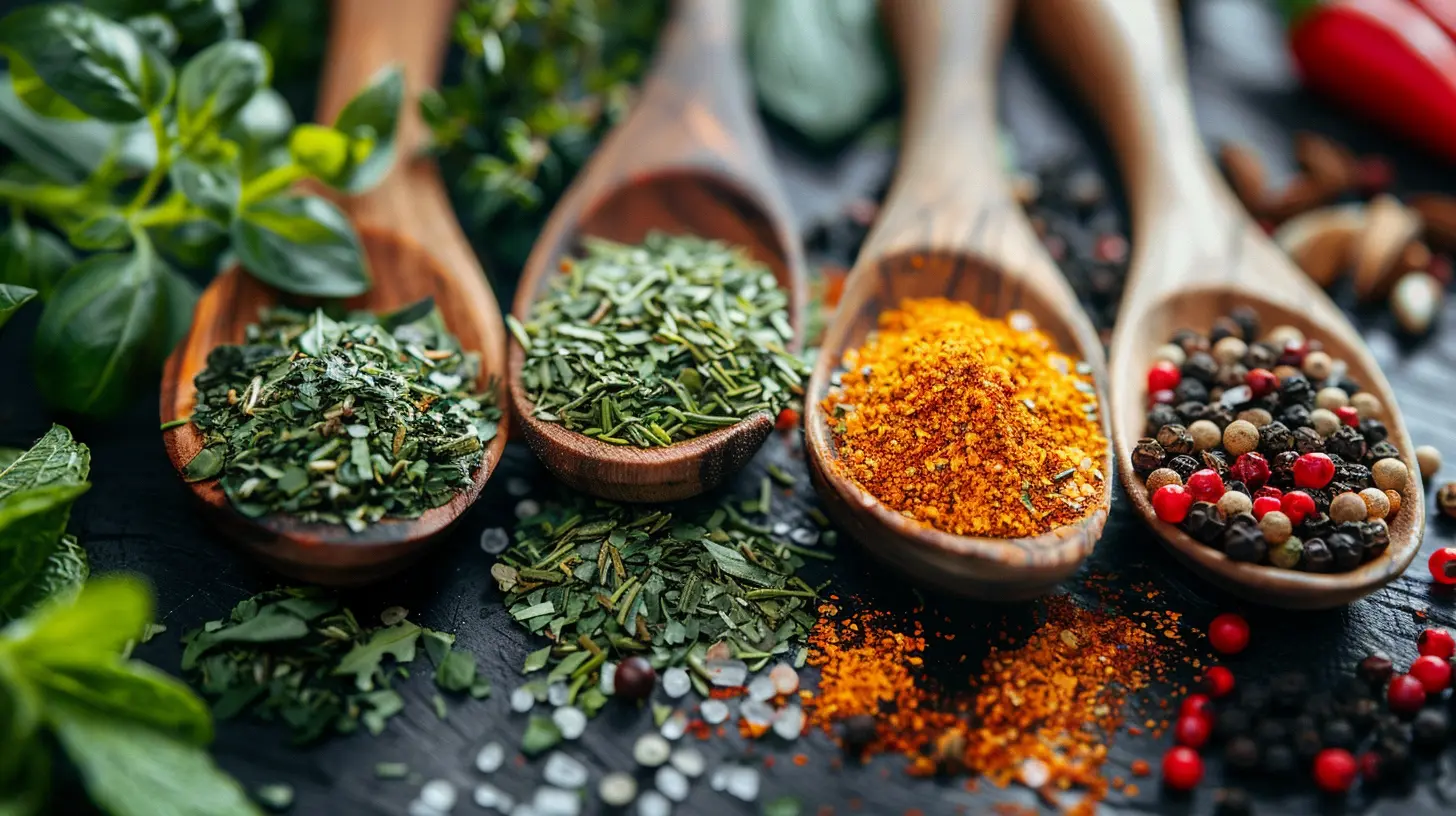The Best Organic Herbs and Spices to Spice Up Your Diet
14 August 2025
Let’s be real: food without flavor is just... sad. Like socks without shoes or a beach without sand — it’s missing something essential. And when you’re trying to eat cleaner or healthier, flavor can make or break your meal commitment. That’s where herbs and spices come in — they’re nature’s way of turning “blah” into “bam!”
But hey, not all herbs and spices are created equal. If you’re reaching for those dusty, old spice jars from the back of your pantry, we need to talk. Organic herbs and spices are the real MVPs here — rich in flavor, free from synthetic nasties, and packed with health benefits that’ll make your body do a little happy dance. So grab your apron and let’s dive into the best organic herbs and spices to spice up your diet and take your meals from meh to magnificent.
Why Go Organic With Herbs and Spices?
You might be wondering, “What’s the big deal with going organic?” Great question.Conventionally grown spices often carry pesticide residues. Some are irradiated (yep, zapped with radiation) during processing. Not exactly the seasoning you had in mind, right? Organic herbs and spices, on the other hand, are grown without synthetic chemicals, GMOs, or artificial preservatives. Long story short: they’re cleaner, more potent, and better for both your health and the planet.
Plus, when you go organic, you tend to get more bang for your buck in terms of flavor. That means you can use less — and still get that same zesty kick.
Top Organic Herbs and Spices You Need in Your Kitchen
Get ready to revamp your spice rack! These are the organic game-changers that not only add taste but also come with some pretty sweet health perks.1. Turmeric – The Anti-Inflammatory Powerhouse
Let’s start with a legend. Turmeric, with its vibrant golden hue, is the Beyoncé of spices — bold, powerful, and good for you in a million ways.Flavor profile: Earthy, slightly bitter, with a hint of pepper.
Health perks:
- Packed with curcumin, known to reduce inflammation.
- May help with joint pain, digestion, and brain function.
- Antioxidant-rich and supports heart health.
How to use: Sprinkle into soups, stews, smoothies, or rice. Add black pepper to boost absorption. Golden milk, anyone?
2. Cinnamon – Sweet Meets Healthy
Cinnamon isn’t just for snickerdoodles and pumpkin spice lattes. Go organic and you’ll discover its warm, rich flavor can work wonders in savory dishes too.Flavor profile: Sweet, warm, and a little spicy.
Health perks:
- Helps regulate blood sugar (diabetics, take note!).
- Rich in antioxidants.
- May improve metabolism and fight infections.
How to use: Mix into oatmeal, smoothies, curries, or even chili. Try Ceylon cinnamon for a milder, sweeter, and safer option than the common Cassia variety.
3. Ginger – Zesty and Zingy
Ginger’s like that friend who’s always ready for an adventure — a little spicy, a little wild, but always a good time. Organic ginger root or powder can seriously jazz up your meals.Flavor profile: Sharp, spicy, slightly sweet.
Health perks:
- Soothes digestion and nausea.
- Acts as a natural anti-inflammatory.
- Supports immunity and circulation.
How to use: Stir into teas, marinades, stir-fries, or even fresh juices. Grate the root or use organic powdered ginger for convenience.
4. Basil – Your Aromatic Bestie
Basil isn't just for Italian dishes. Organic basil is incredibly fragrant and carries loads of flavor, especially when dried properly (and organically).Flavor profile: Sweet, peppery, and slightly minty.
Health perks:
- Supports immune health.
- Natural antibacterial properties.
- Rich in vitamin K and iron.
How to use: Sprinkle over pasta, eggs, or roasted veggies. Mix into sauces or blend into a homemade pesto.
5. Oregano – The Mediterranean Marvel
Oregano isn’t just pizza's plus-one; it's also one of the most antimicrobial herbs in your kitchen.Flavor profile: Robust, earthy, with a hint of bitterness.
Health perks:
- High in antioxidants.
- Natural antibacterial and antifungal.
- May support respiratory health.
How to use: Add to tomato sauces, grilled meats, salads, or dressings. The dried version is often more concentrated — and organic dried oregano is pure magic.
6. Cayenne Pepper – The Heat Bringer
If you like it hot, cayenne is your go-to. This fiery spice not only kicks up the flavor but also revs up your metabolism.Flavor profile: Spicy, pungent, and hot (obviously).
Health perks:
- Boosts metabolism and curbs appetite.
- Improves digestion and circulation.
- Natural pain reliever (thanks to capsaicin).
How to use: Add a pinch to scrambled eggs, soups, or roasted nuts. Trust me, a little goes a long way.
7. Parsley – The Underrated Hero
You may know parsley as a garnish, but there’s more to this leafy green than meets the eye. Organic dried parsley is surprisingly flavorful, and fresh organic parsley adds a burst of brightness to any dish.Flavor profile: Fresh, slightly bitter, grassy.
Health perks:
- Rich in vitamins A, C, and K.
- Natural diuretic (bye-bye, bloating).
- Supports bone and eye health.
How to use: Toss into tabbouleh, sprinkle over roasted potatoes, or blend into green juices and pestos.
8. Cumin – The Earthy Depth Giver
Cumin adds a deep, nutty flavor that makes dishes feel hearty and complete. It’s one of those spices that adds “oomph” without needing a lot.Flavor profile: Warm, earthy, nutty.
Health perks:
- Aids digestion and nutrient absorption.
- May reduce cholesterol.
- Packed with iron.
How to use: Great in Mexican, Indian, or Middle Eastern recipes. Add to rice, lentils, or taco seasoning blends.
How to Store Organic Herbs and Spices for Maximum Freshness
Okay, so you've stocked up on the good stuff — but now what? Improper storage can murder your spices’ flavor and potency (and nobody wants that tragedy).Here’s how to keep them fresh:
- Store in airtight glass containers.
- Keep them in a cool, dark place (not above the stove!).
- Avoid plastic containers — they can absorb oils and odors.
- Label them with the date of purchase and aim to use within 6–12 months.
Honestly, if your paprika smells like nothing... it probably tastes like nothing too.
Ways to Incorporate Herbs and Spices into Your Everyday Meals
So you've got your arsenal of organic herbs and spices. Now what? Here's how to sneak them (or boldly flaunt them) into your daily meals:- Breakfast: A dash of cinnamon in oatmeal, turmeric in scrambled eggs, or basil in an avocado toast spread.
- Lunch: Sprinkle oregano into soups, cumin into grain bowls, or parsley into a chickpea salad.
- Dinner: Use cayenne in curries, ginger in stir-fries, or turmeric in rice.
- Drinks: Try cinnamon and ginger in herbal teas, turmeric in golden milk, or muddled basil in water with lemon.
The trick is to experiment. Start small, taste often, and trust your palate.
Organic vs. Non-Organic: Is It REALLY Worth the Cost?
Let’s talk money for a second. You’ve probably noticed that organic herbs and spices tend to be pricier. So is it worth shelling out a few extra bucks?Short answer? Yes.
Think about it this way: organic herbs and spices are more concentrated in both flavor and nutrients. That means you often use less for the same (or better) result. Plus, you’re avoiding pesticides, chemical preservatives, and irradiation. It’s an investment in your health — and your taste buds.
Here’s a pro tip: buy in bulk from reputable organic suppliers or co-ops. It's eco-friendly, cheaper by weight, and cuts down on packaging waste.
Final Thoughts: Spice Up Your Life, Organically
Your spice rack isn’t just there to make your food taste good — it’s a toolkit for better health, a passport to global flavor, and a reminder that clean eating doesn’t have to be boring.By switching to organic herbs and spices, you're making a conscious choice to fuel your body with cleaner, more nutritious flavor bombs. So go ahead — play with your food. Add a sprinkle of this, a pinch of that, and unleash your inner chef.
Your taste buds (and your body) will thank you.
all images in this post were generated using AI tools
Category:
Organic FoodsAuthor:

Tiffany Foster
Discussion
rate this article
1 comments
Katalina O'Brien
Forget boring meals! With these herbs and spices, your taste buds will be dancing like no one’s watching—except maybe your cat!
September 7, 2025 at 4:52 AM

Tiffany Foster
Absolutely! Herbs and spices can truly transform your meals and make every bite exciting—your cat might just want a taste too!


